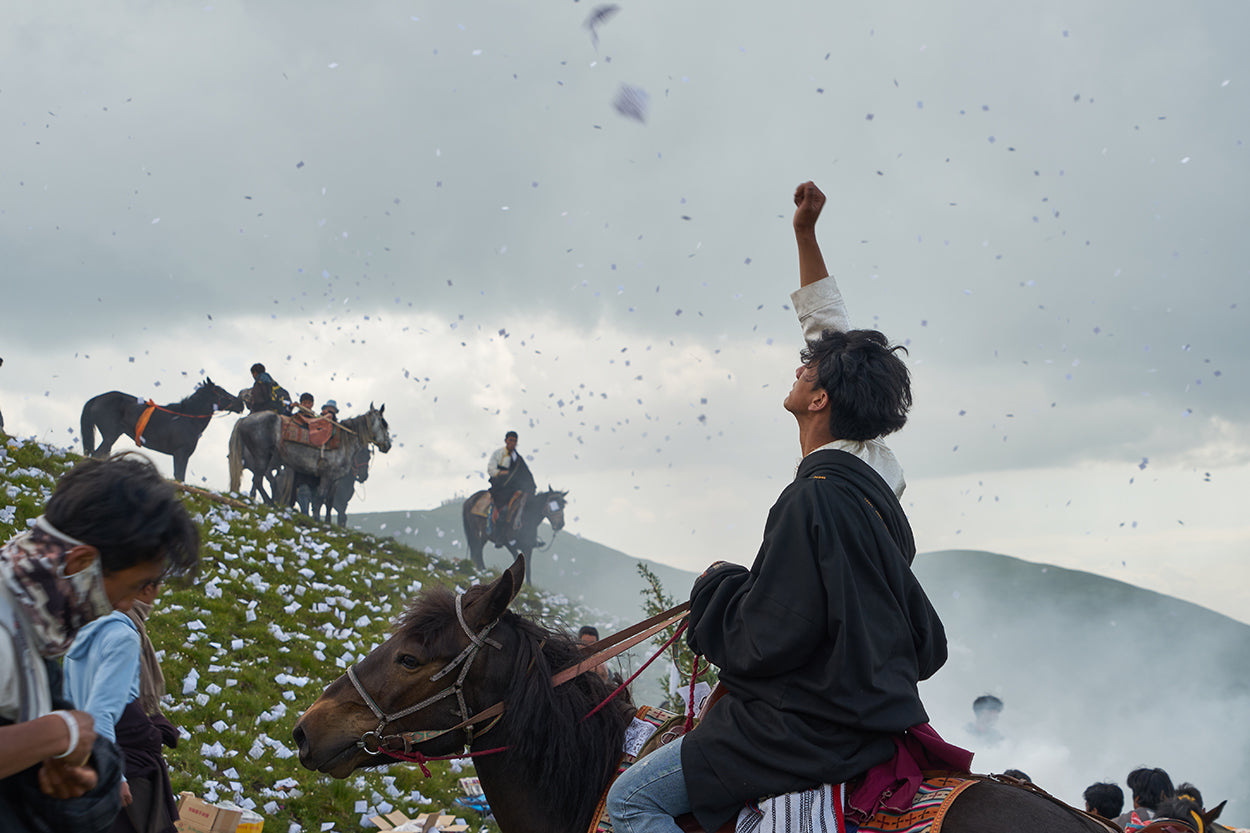LAPTSE
 Fluttering flags, smoke, paper effigies of the wind horse, the harbinger of good fortune, falling like snow, the sound of hoofs, and the cries of horsemen, are the overpowering sights, sounds, and smells of a Laptse, a ritual that takes place several times a year in Ritoma to honour the local deities.
Fluttering flags, smoke, paper effigies of the wind horse, the harbinger of good fortune, falling like snow, the sound of hoofs, and the cries of horsemen, are the overpowering sights, sounds, and smells of a Laptse, a ritual that takes place several times a year in Ritoma to honour the local deities.
Buddhism spread into the Tibetan plateau from India in the 7th century, where the Bon religion thrived among many animistic cults. Buddhism gradually made its way, with temples and monasteries, establishing itself among the existing cults. Buddhist sages and lamas did not reject or oppose the existing order but gained its support by integrating the many deities that populated the hills, mountains, and rivers as protectors of the new faith. Tibetan Buddhists believe the human realm is just one of six. There are innumerable creatures that we do not see but are everywhere. Tibetans call them land owners; like humans, they differ in their ranks and powers. They are not considered sacred but call for respect and consideration. Like humans, they can become friends or enemies, protect or harm. With our greed and numerous concerns, we humans have moved away from the earth’s pulse, but they have not. They have become the link between the nomads, who rely on the environment for their livelihood, and Mother Earth's whims.
Tibetan Buddhists believe the human realm is just one of six. There are innumerable creatures that we do not see but are everywhere. Tibetans call them land owners; like humans, they differ in their ranks and powers. They are not considered sacred but call for respect and consideration. Like humans, they can become friends or enemies, protect or harm. With our greed and numerous concerns, we humans have moved away from the earth’s pulse, but they have not. They have become the link between the nomads, who rely on the environment for their livelihood, and Mother Earth's whims.

The Laptse ceremony, an integral part of pastoral life, is a way to show respect to the local masters of the hills, rivers, and lakes. In Ritoma, where the most important local deity, Amnye Tongra, occupies the highest hill, the clan members pledge allegiance and request his support and protection from drought, disease, and misfortune. They make offerings of incense, food, and even brocade, which they burn, and plant their clan arrows into a tower-like structure that dominates a hill and can be seen from miles away.


